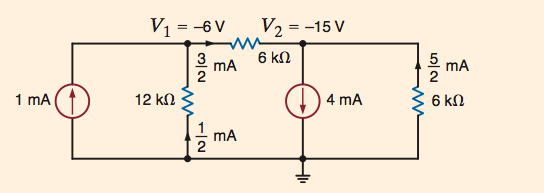
My book above uses nodal analysis to find the current and voltage across the resistors.
Now consider this alternate circuit:

Look at the branch that doesn't any components (the second straight line with no components). How would I find the current across it? I only know Kirchoff's Laws and Nodal Analysis so far. Can the current across it be found using these techniques?
